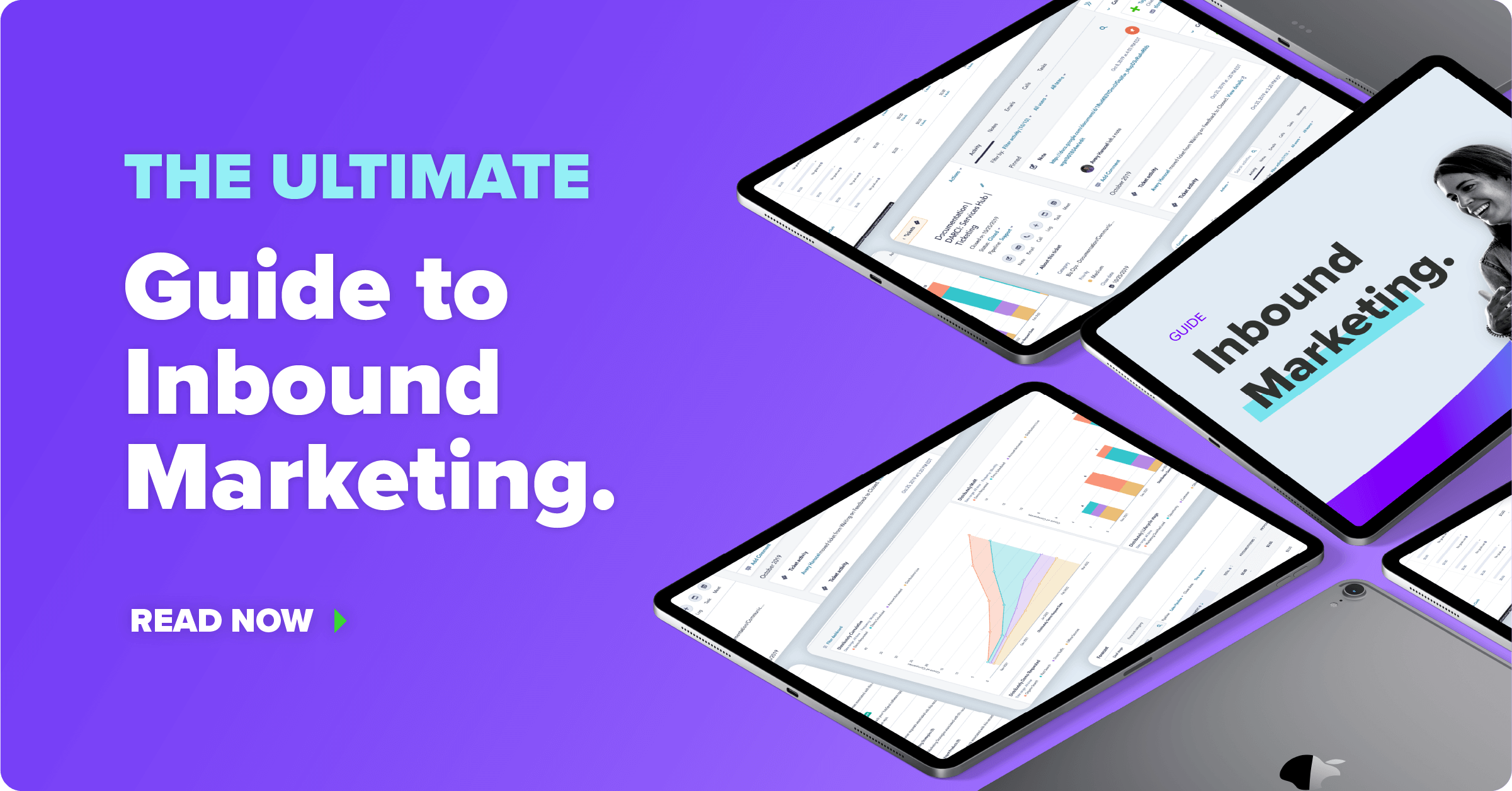5 Inbound Marketing Strategies We Couldn't Live Without
Rather than blasting a message to prospects and hoping they’ll buy from you, you need to engage with them and provide valuable content that helps them better understand their challenges.
Inbound marketing uses contextually relevant content to attract high-fit visitors to your site. Instead of intruding into prospects’ lives to gain attention and interest, inbound marketers create content that answers prospects’ questions and helps them understand the potential solutions to their problems. This way, when they’re ready to consider which solution they should buy, they’ve already experienced the value your company can provide them with.
Here are five inbound marketing strategies to help you attract and engage with prospects.
Social Media
When utilizing social media as a strategy, it’s important to be authentic and align your content with your brand. The point of social media is not just to automate posts that drive people to your website. You should be focusing on creating an impactful experience for your audience on the platform they are already on.
For example, instead of guiding your visitors to a blog post on your website, create an infographic that summarizes the information in a way that is easy to digest in 10 seconds. By providing value to audiences in the platform they’re already on, you can increase your social media engagement and organically attract people to your content.
SEO
There’s a great deal of value in having a website that is designed for lead generation. SEO helps make it as easy as possible for the people you want to find your website to be able to navigate there organically.
Your SEO strategy should be centered around your buyer personas. Conduct proactive keyword research to understand what your personas are searching for and then begin crafting content that will provide value to them.
“You should care more about assisting your clients than driving traffic. If you approach SEO with this mindset, you can simplify the task, creating a step-by-step plan on how to create value,” says Isaac Desranleau in the blog “7 Can’t Miss Elements of a Complete SEO Strategy.”
Since the inbound marketing methodology revolves around crafting valuable pieces of content for your prospects, SEO and inbound go hand-in-hand. As you continue to produce content, SEO best practices will drive high rankings. In turn, this will make it easier for your prospects to find your content.
Email Marketing
Segment, segment, segment!
Email marketing provides you with a unique opportunity to choose who you want to talk to and how you want to go about reaching them. While an interactive email loaded with CTA’s may be great for persona A, persona B may be more receptive to a newsletter that gives a quick rundown of a large sum of content.
Understanding the types of content and messaging you’re prospects are likely to engage with will be step one of developing a stellar email nurture campaign. If you notice a downward trend in your open and click-through rates in your emails, you should reevaluate who you’re sending them to.
Keep the inbound tenet of adding value in mind. The goal is not to send emails for the sake of sending emails, but rather to listen to your prospects and provide them with valuable, relevant content. If you aren’t providing value to your contacts, you’re less likely to drive conversions.
Conversational Marketing
Conversational marketing techniques will apply seamlessly to an inbound marketing strategy. By nature, chatbots are engineered to be engaging. They can provide you with an opportunity to veer slightly off path and have a little bit more fun with your communication tactics. By throwing in some strategically-placed emojis and cheeky phrases, chatbots can help you drive your lead generation.
Like most inbound marketing techniques, conversational marketing is only successful when it is supported by relevant content. No matter how engaging your playbook might be, you will only drive conversions if you’re ultimately able to provide prospects with something they’ll gain value from.
Partner Marketing
Partner marketing will boost awareness and help scale your business by growing your network through link building. It’s another great way to build authentic relationships and continue organically attracting your high-fit leads to your content.
When browsing online, customers are looking to find authenticity and credibility in the content they consume. When two or more companies collaborate on new, valuable content together, customers are more likely to react positively. When developing a partner marketing strategy, some best practices to follow are to establish mutual goals, ensure careful reporting, co-host events, create co-branded content and set partnership tiers.
Key Takeaway
It’s better to have a diverse group of strategies in order to better leverage your content. By taking advantage of multiple strategies at once, you can diversify your risk — instead of betting your marketing strategy’s success on the effectiveness of one tactic, using multiple strategies together allows your marketing efforts to still be successful even if an individual tactic isn’t gaining the traction you’d expected.
Once you’ve started implementing strategies, re-evaluate their performance to identify which have been most effective and which could use some more support. Then invest your time and resources accordingly.





